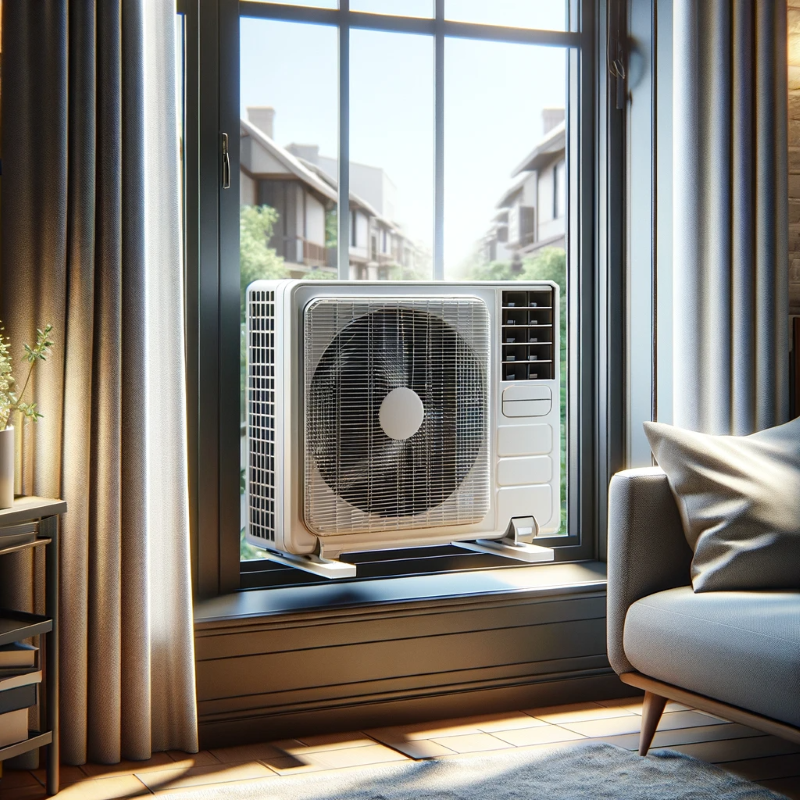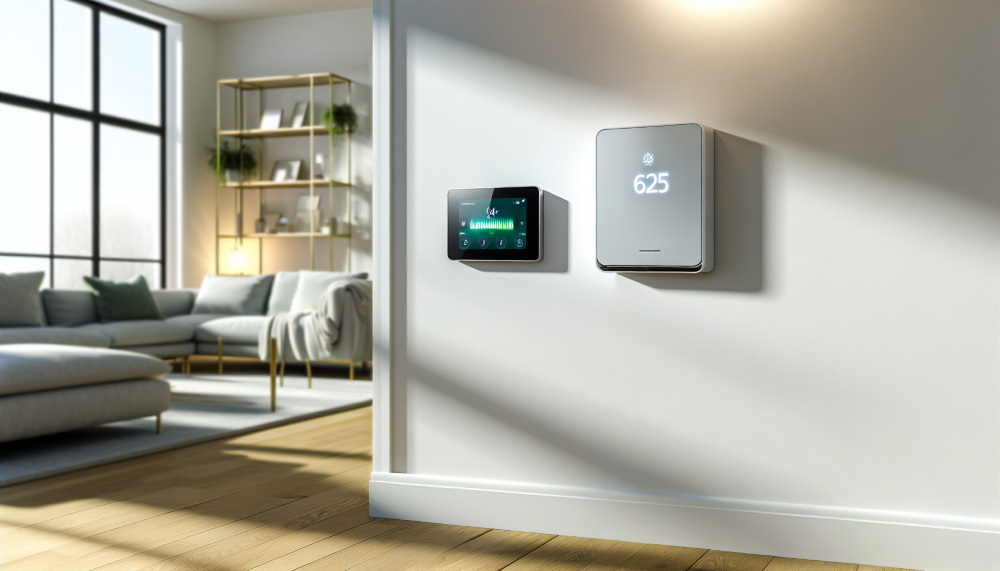Will a Cheap Air Conditioning Unit Still Keep You Cool?
Are you tired of sweating it out in the heat?
Unfortunately, keeping each room full of cool air isn’t cheap. Paying for a quality air conditioner can be expensive, especially if you need a brand new central air system for your home. But if all you crave is cold air, are there ways you can still keep things cool without breaking the bank?
In this post, we’ll explore some of the alternatives to traditional air conditioning and recommend some of the best air conditioners money can buy.
Alternatives to Traditional Central Air Conditioners
Window Air Conditioners
Window air conditioners are extremely common across the planet for keeping the air cooler indoors than it is outside. These air conditioners work on a smaller scale and can usually keep one or two rooms cool at most. As the name suggests, installation for these units involves opening a window, fitting it into place, and closing the window down onto the unit to keep it in place.
How Window Units Work
Window air conditioners come in a huge range of models with an equally wide array of features. They work the same way as a traditional HVAC system, with refrigerant, coils, and a condenser unit that rests outside of your home.
Window air conditioners are extremely easy to install without professional help. The only issue you might consider is whether the unit itself is too heavy for you to lift on your own.
Window Air Conditioner Applications
You’ll mostly want to use a window air conditioner in a room that needs to stay cool. Many homeowners have multiple window ACs, sometimes cooling the same room. To control a window unit, you can either operate the controls on the unit itself or use remote control.
Newer models with prices as low as $150 come with remote control, and more expensive models have a built-in dehumidifier among other cool options.
Portable Air Conditioner Units
If you’re looking for a portable option, a portable air conditioner is your best bet for keeping things cool without spending a small fortune. A portable AC unit is far better than just a fan but not quite as effective as window air conditioners for keeping several rooms cool.
How Portable Air Conditioner Units Work
A portable air conditioner works very much like any other type of air conditioner. Refrigerant runs through a series of coiled tubes that absorb indoor heat which is then released through an exhaust hose outside. But with portable AC units, heat isn’t released by a portion of the unit that rests outside the home.
Instead, the warm air is released through a hose similar to a drier vent. Most portable air conditioner units come with a window kit that allows you to feed the tube through a cracked window without losing any of your cool air.
Portable Air Conditioner Applications
Homeowners who choose a portable air conditioner usually want to cool down smaller spaces, like a living room, guest room, dining room, etc. This means the specific coverage area is limited to a single room or only a few hundred square feet. While you might not always reach the perfect temperature, you’ll be able to keep the air cooler in whatever space it occupies than if you went without an air conditioner altogether.
Smart Air Conditioner Systems
Think controlling your AC with a remote isn’t advanced enough for you? At their core, smart ACs are simply any type of air conditioner that connects to a WiFi network. And you’re probably thinking, “That sounds even more expensive than a traditional air conditioner!”
You’re right. Smart air conditioners are simply upgraded versions of an existing unit with more high-tech gadgetry incorporated into their design. They’ll cool your room, remove excess moisture, optionally come with a built-in dehumidifier, and offer multiple fan modes just like any other air conditioner, whether it’s a full HVAC system, window unit, portable unit, or otherwise.
How Smart AC Units Work
Smart air conditioners have a bigger brain than an ordinary air conditioners. While you may have an existing AC unit that you can operate with remote control, these allow you to use an app on your mobile device or connected PC to control your home cooling and heating from any room.
The price on these will undoubtedly be higher, yet you’ll have considerably more control over the temperature of the air in any room of your home – simply because you can do it from anywhere you choose.
Smart AC Unit Applications
One of the best features of a smart air conditioner is its ability to connect to Google Assistant. This allows you to control your home’s indoor air environment with the added convenience of doing it from anywhere.
Using Google Assistant to control the air temperature in your space means you can talk to it rather than bothering yourself with a remote control or plain old buttons and knobs. Just remember, the top deals on smart air conditioners will still be considerably more expensive per room than a traditional AC system.
Humidifiers and Dehumidifiers
While these systems do technically condition the air, they aren’t air conditioners for our purposes here today. However, some homeowners will use them for cooling rooms during the summer when there is a lot of extra moisture in the air.
Conversely, when the air is extremely dry during the cool months of the year, a humidifier can keep nasal passages from getting too dry, irritated, or damaged.
Still, these systems should be used to complement an existing air conditioner system or fan. If energy costs are your number one concern, you can try to use these in your bedroom at night while running your AC unit on a much lower fan setting.
Should You Spend More?
You’ve heard it a million times: you get what you pay for. Price matters of course, but does that apply to common home air conditioners?
Could you get by with a window unit and a strong fan?
In this heat, not likely. Let’s explore.
Efficiency vs. Affordability
Keeping the price you pay as low as possible is a given, no matter how much money is in your wallet. But there are certain things you simply shouldn’t be cheap about, and air conditioners are pretty high on that list. The cheaper the unit, the lower its SEER (Seasonal Energy Efficiency Rating) will be.
SEER Ratings
This is a crucial point. A cheap air conditioner unit with a SEER rating of 8 will cost around $100 each month, while a unit with a SEER rating of 21 will cost as low as $40 per month. See the difference?
The higher SEER-rated unit will cost much more upfront but will save you a tremendous amount of cash over time. So shop around and find a better unit at an affordable price.
Name Brand vs. Off Brand
The price of a name brand AC when compared to the price of a knockoff brand is pretty significant. But this isn’t the same as it is with prescription drugs – think more along the line of designer watches versus a cheap watch you find on the street.
Sure, the price point is a lot better. But because off-brand AC units are designed with lesser components, a weaker fan, a poorer functioning dehumidifier, and a remote with fewer features, you’ll pay the price later down the road when it breaks down completely.
Shop around between brands and try to find a respected manufacturer at a price you can afford. Keep the square feet of your home in mind as well as your specific cooling needs. Even if the price is a bit higher, it’ll pay for itself in comfort and peace of mind this summer and beyond.
Your Best Bet
Ultimately, a more affordable air conditioner can keep you cool during the hottest months of the year. These units carry a much lower price tag but are as a result less efficient at cooling than a more robust air conditioning system like a central air system.
That’s why if you want to make sure you never need to worry about your comfort during the hottest (and coldest) months of the year, central heat and air system is your best bet. Of course, this depends largely on the design of your home, your specific cooling needs, and your budget.




